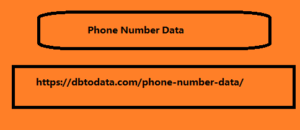doesn’t matter what type of campaign you’re building, you need content to make it successful. The truth is, we digital marketers depend on content, which means we need to be able to churn out valuable blog posts, lead magnets, videos, landing pages, and more—all of them well-written, and all of them delivering real value. 95% of digital marketers don’t consider themselves writers… Trouble is, 95% of digital marketers don’t consider themselves writers. They start sweating bullets at the mere thought of writing content. If that’s you, I’ve got you covered. Because today, I’m going to give you my proprietary system for writing content that gets real results. Mind you, these aren’t just content writing tips. Tips don’t help you put words on the page. What I’m giving you is better: the simple 7-step content writing process I use for every piece of content I write. Don’t worry… This is Better Than Content Writing Tips I get it.
Pick Your Topic
You’ve probably read a hundred posts offering content writing tips that didn’t help at all. And a 7-step writing process may sound like overkill. But stay with me. It’s not. In reality, there are just 3 stages of writing: Pre-writing, where you gather your ideas Writing, where you put your ideas into words Post-writing, where you edit and optimize your words The 7 steps I’m about to give you are the tasks that fit into these 3 stages. And every writer worth their salt uses them (consciously or unconsciously). I’ve just Australia Phone Number Data broken it down for you, so you don’t accidentally skip any of them. Besides, they get easier the more you practice. The first few times you use my content writing system, you may feel like you’re working through 7 distinct steps. But it won’t take long for them to become second nature. When that happens, you won’t think of them as separate steps. They’ll blur together seamlessly, until 7 steps become just 1 simple writing process.
Know Your Goal
So forget content writing tips! Here’s the 7-step writing process you really need. The Pre-Writing Stage 1. Know Your Goal Content should never be produced for its own sake. In other words, “I have to publish 3 articles a week” isn’t the best reason to write a blog post. Any content you create should help you achieve a specific business goal, like traffic, leads, sales, or thought leadership. Why does that matter? Because you’ll be making a million creative decisions as you create your content—things like: Content Afghanistan Phone Number List should never be produced for its own sake. Tone Writing style How in-depth you go Whether you provide solutions or just educate your readers about a problem If you know the goal for your project, you’ll make decisions that will help you get the end result you’re looking for. So start with your goal. What do you want this piece of content to do for you? 2. Pick Your Topic Your topic is the general subject of your content piece. A good topic will help you achieve your goal, but it should also be something your audience is already interested in. To find your best ideas, look in these 3 places: Customer questions. If one customer asks a question, you can bet others have the same question. Your answer can make an informative piece of conten.

